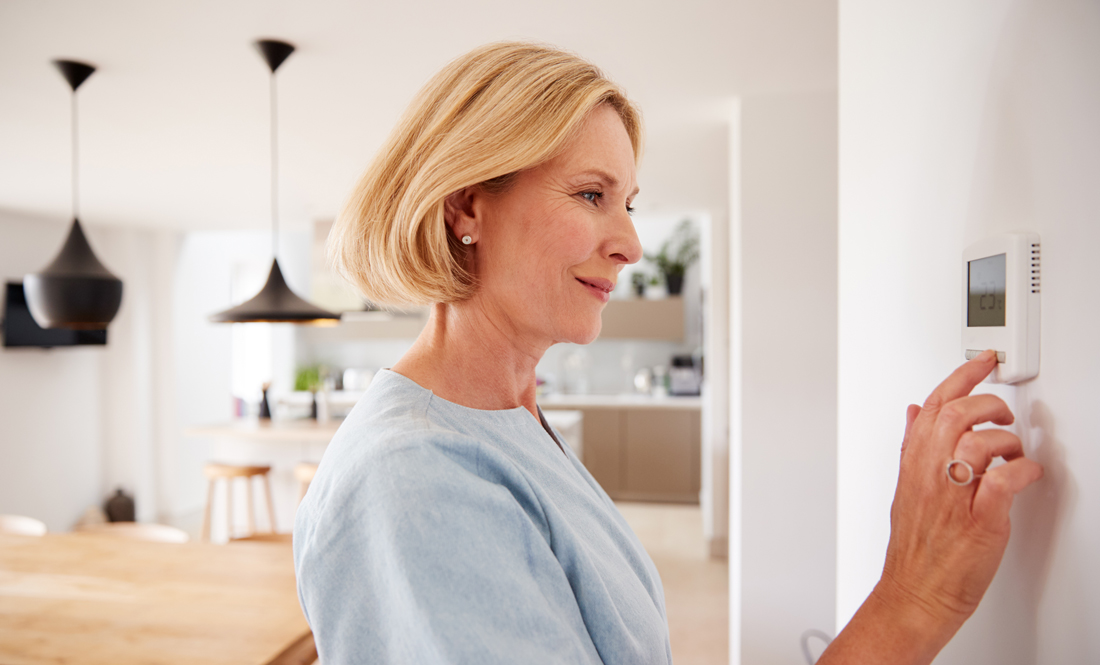How to Tell If Your Heating Bill Is Too High — and What to Do to Lower It
In many parts of the country, homeowners are preparing for an annual shock to their pocketbook — cold-weather heating bills. As temperatures fall outside, your home heating system starts working overtime to keep your family comfortable. While warm-weather states rely less on winter heating, cold-weather locations are hit hard.
Texas residents, for instance, have an average annual gas bill of just $481, while Connecticut tops the continental U.S. at $1,184. Besides the severity of your winter, however, there are many things to look for around your home that may be driving up your bill.
What to Look for Around the Home
Making sure your heating system is well maintained and formatted is key to efficient home heating, and lowering your bill at the end of the month. Most homeowners know to change air filters often — preferably every three-months — but you should also check to see if your attic could use some additional insulation.
Often, people close off vents and shut doors to areas of the house they rarely use, in an effort save energy. In reality, experts say that most systems will more efficiently heat your home with doors and vents open to let heating systems distribute air as originally designed.
Another easy tip for improving heating efficiency is to check the blinds on your windows. Make sure they are open or raised during the day to allow sunlight to naturally heat your home, and then lowered and closed when the sun goes down to keep heat from escaping.
Finally, look for gaps around doors and windows to see if air is leaking out. Over time, weather stripping and seals break down and leave your home exposed.Get With the Program
Properly installing and utilizing the latest technology can make a major impact on your heating bill bottom line. Having access to greater information about your home and more control of your daily heating routine is key to being as efficient as possible.
Most people are familiar with your run-of-the-mill thermostat for controlling the temperature in a home. Today’s tech, however, allows homeowners so much more control, which will lead to better comfort and savings.
For starters, swap out your old thermostat dial for a new programmable thermostat. The EPA says that installing a programmable thermostat and adjusting your system to reduce energy when you leave the home or when outdoor conditions change can lead to savings of 10 to 30 percent on heating bills — a savings of up to $355 per year in our Connecticut example.
Add Precise Monitoring
Even greater benefits can be seen when you pair a programmable thermostat with additional home monitoring systems. A variety of sensors can now be used in the home to better manage costs and comfort. Room monitors, like those from AcuRite, allow residents to precisely measure temperature and humidity throughout the house, spot trouble areas and make adjustments accordingly. With these sensors reporting to My AcuRite through the Access unit, you have the added convenience of keeping an eye on your indoor conditions even when you are away from home.
Recognizing that comfort is about more than just the temperature is important. The EPA recommends that indoor humidity stay between 30 and 60 percent. Below that, residents are more likely to get sick and experience symptoms like nosebleeds, chapped lips or dry skin. Many homeowners choose to pair monitors and adjustable thermostats with additional technology like humidifiers to maintain optimal conditions.
Regularly checking your home and heating system for issues, upgrading your thermostat and installing a precise AcuRite monitoring system will ensure that you can maximize your savings on home heating and keep your family comfortable for years to come.
References
https://www.rockethq.com/learn/personal-finances/average-cost-of-utilities
https://www.acurite.com/blog/monitor-home-heating-efficiency.html
https://www.energystar.gov/ia/partners/prod_development/revisions/downloads/thermostats/Summary.pdf
https://www.acurite.com/temperature-humidity-monitors.html
https://www.acurite.com/indoor-outdoor-home-environment-display-with-4-zone-capability.html
https://www.acurite.com/blog/four-reasons-to-pay-attention-to-indoor-humidity-this-winter.html







